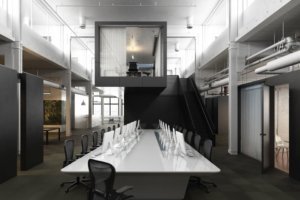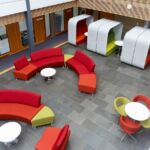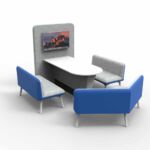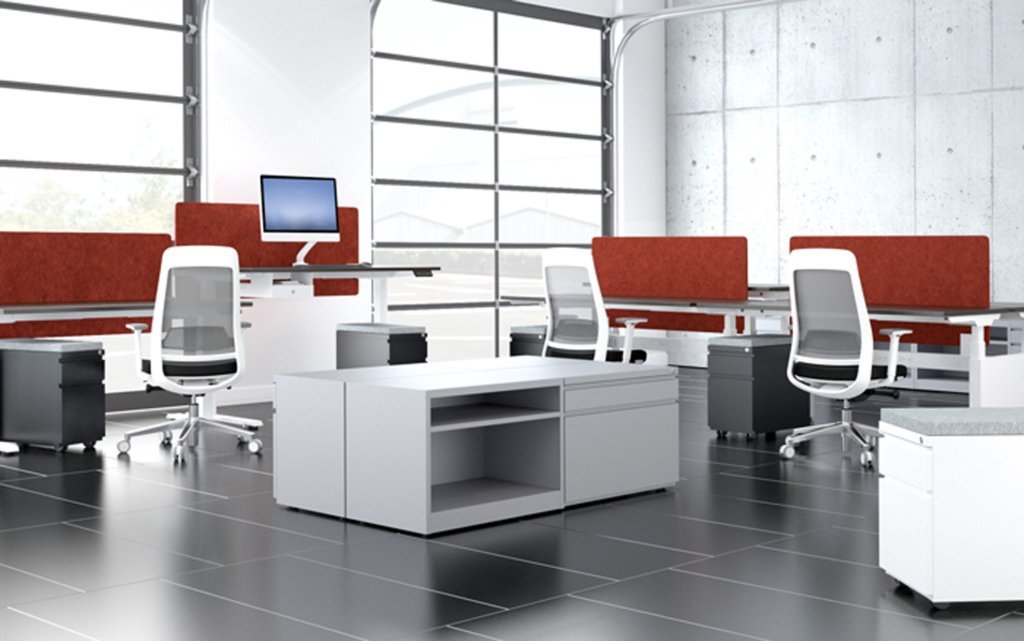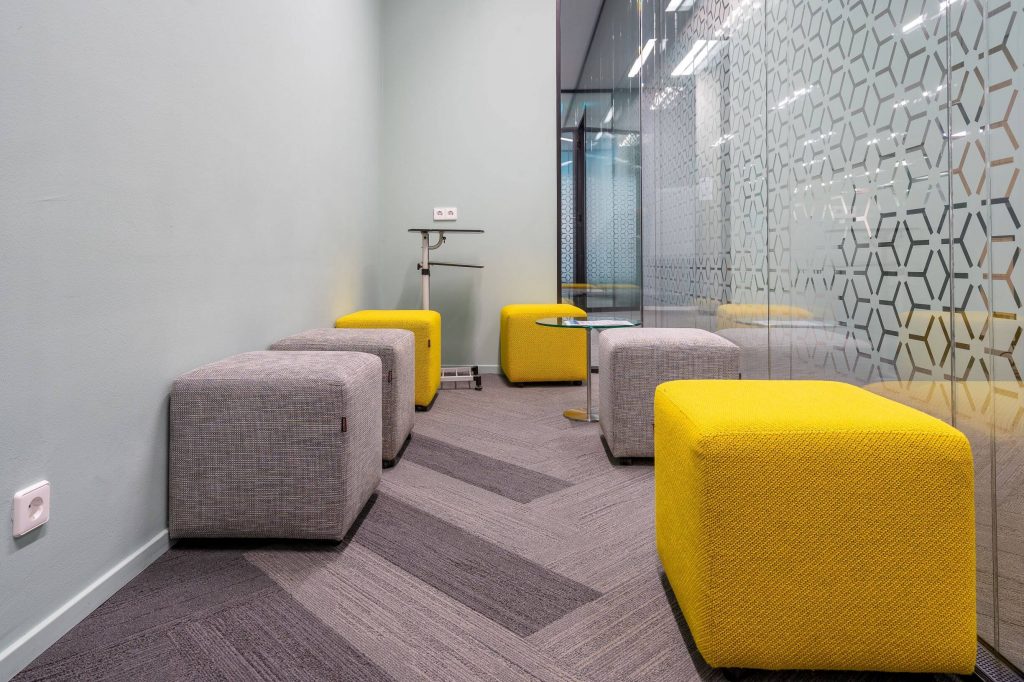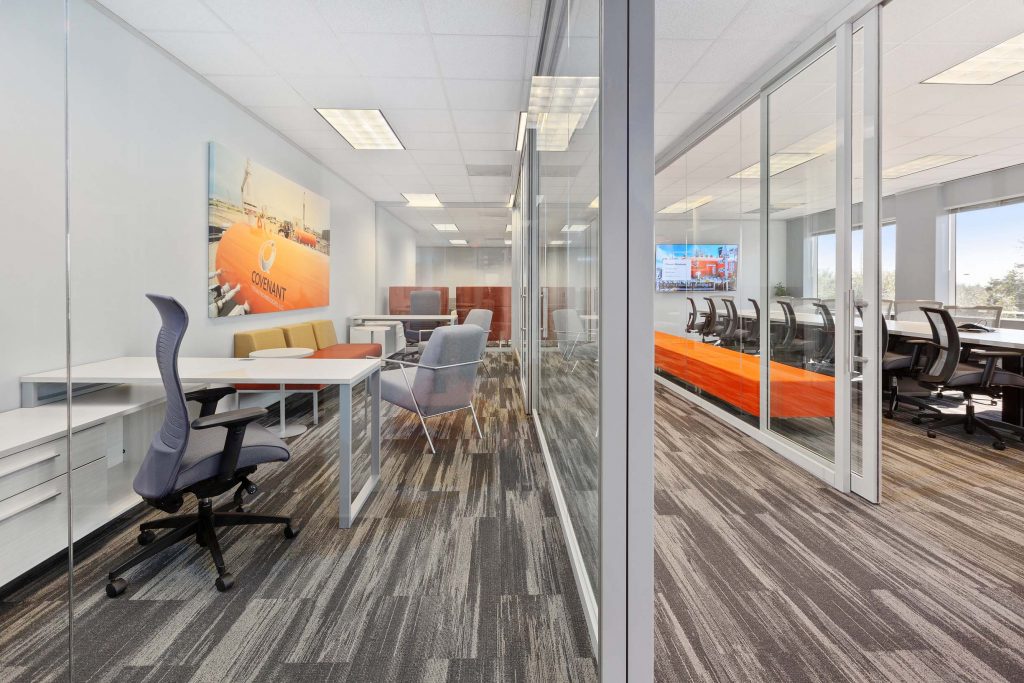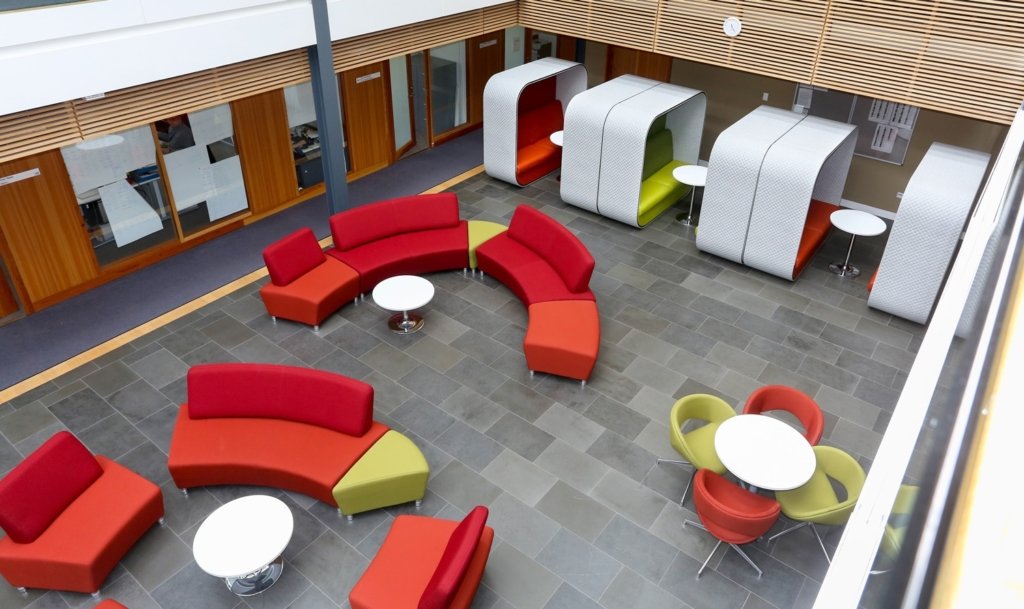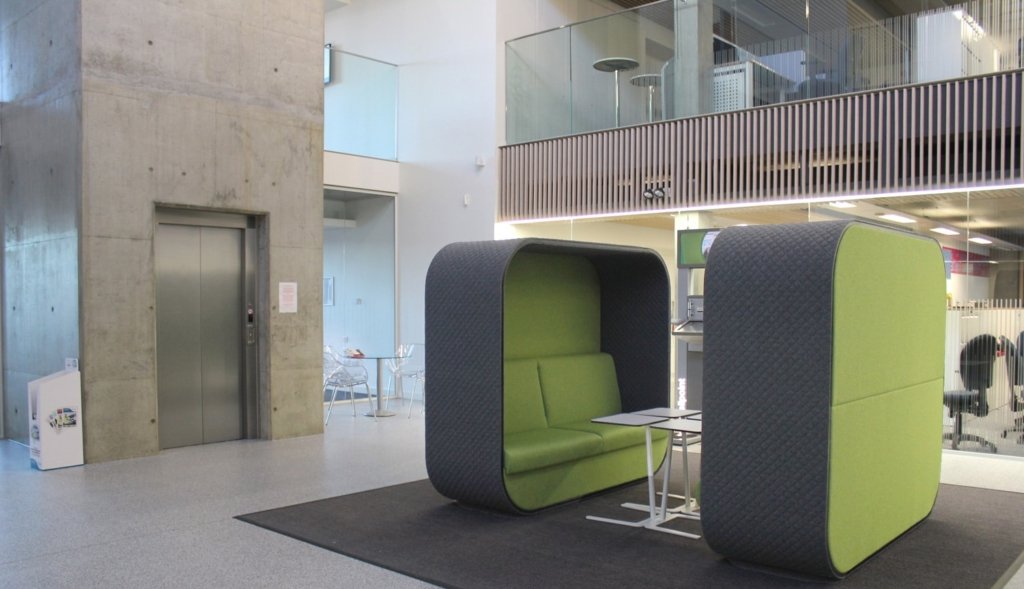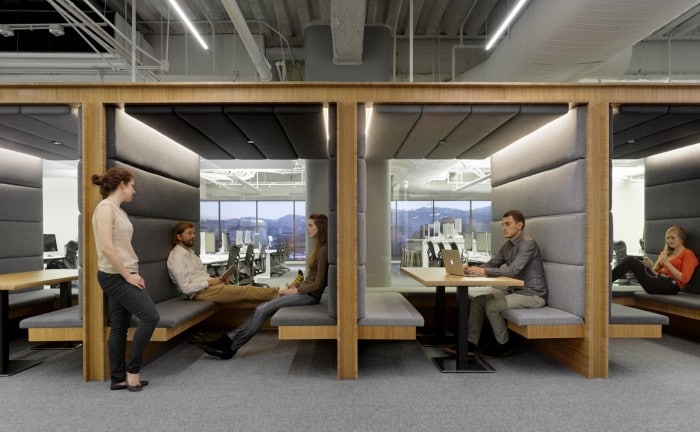What Makes an Office Collaborative?
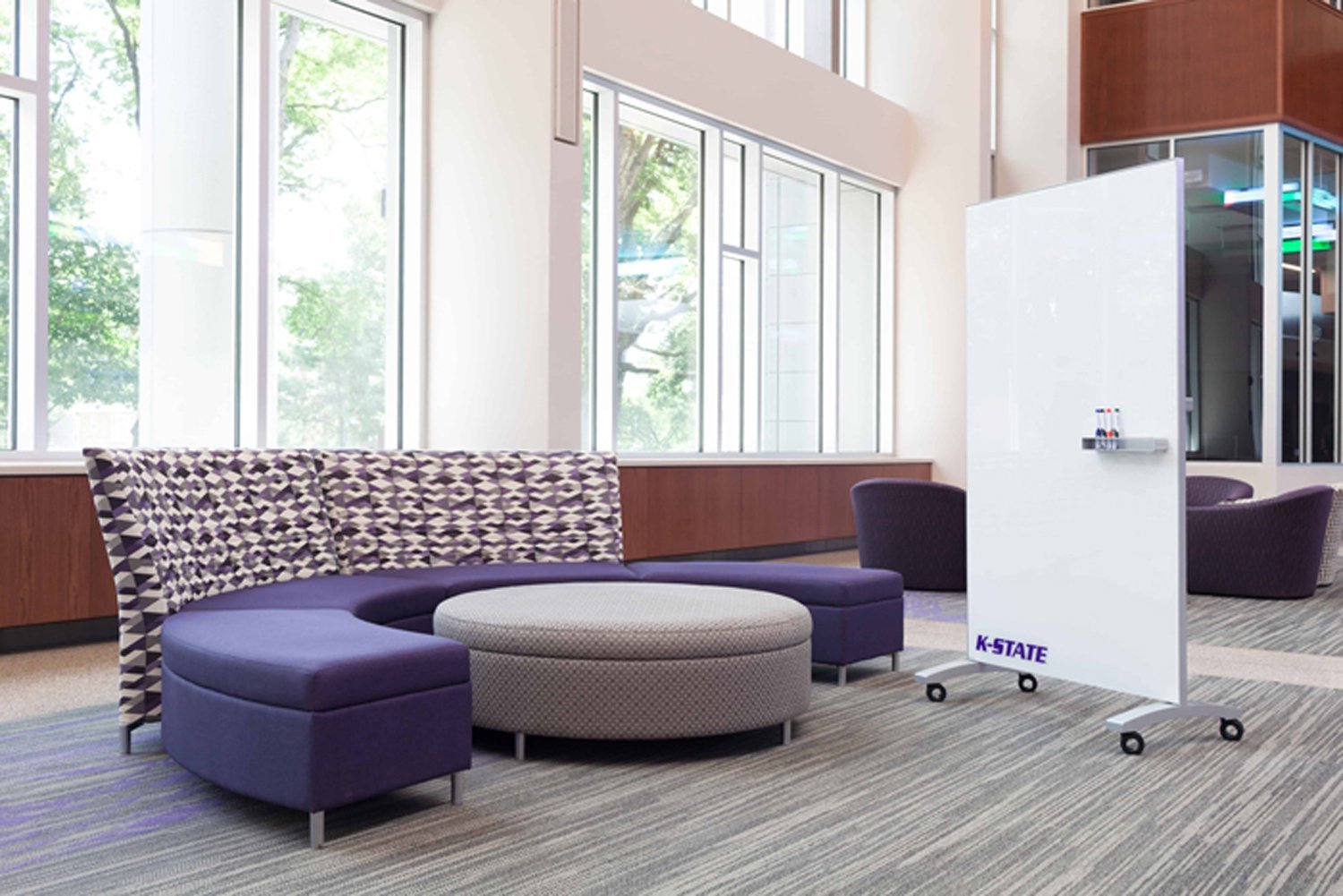
In recent years, traditional offices have rapidly given way to collaborative workspaces.
Research shows that 70% of employees experience higher creativity and job satisfaction in workplaces that allow for more interaction and collaboration.
Now we want to know: what makes an office collaborative?
An office is collaborative when it has open or flexible layouts, shared workspaces and meeting areas, comfortable seating for group discussions, easy access to technology, and zones that encourage spontaneous interaction while still allowing focused work.
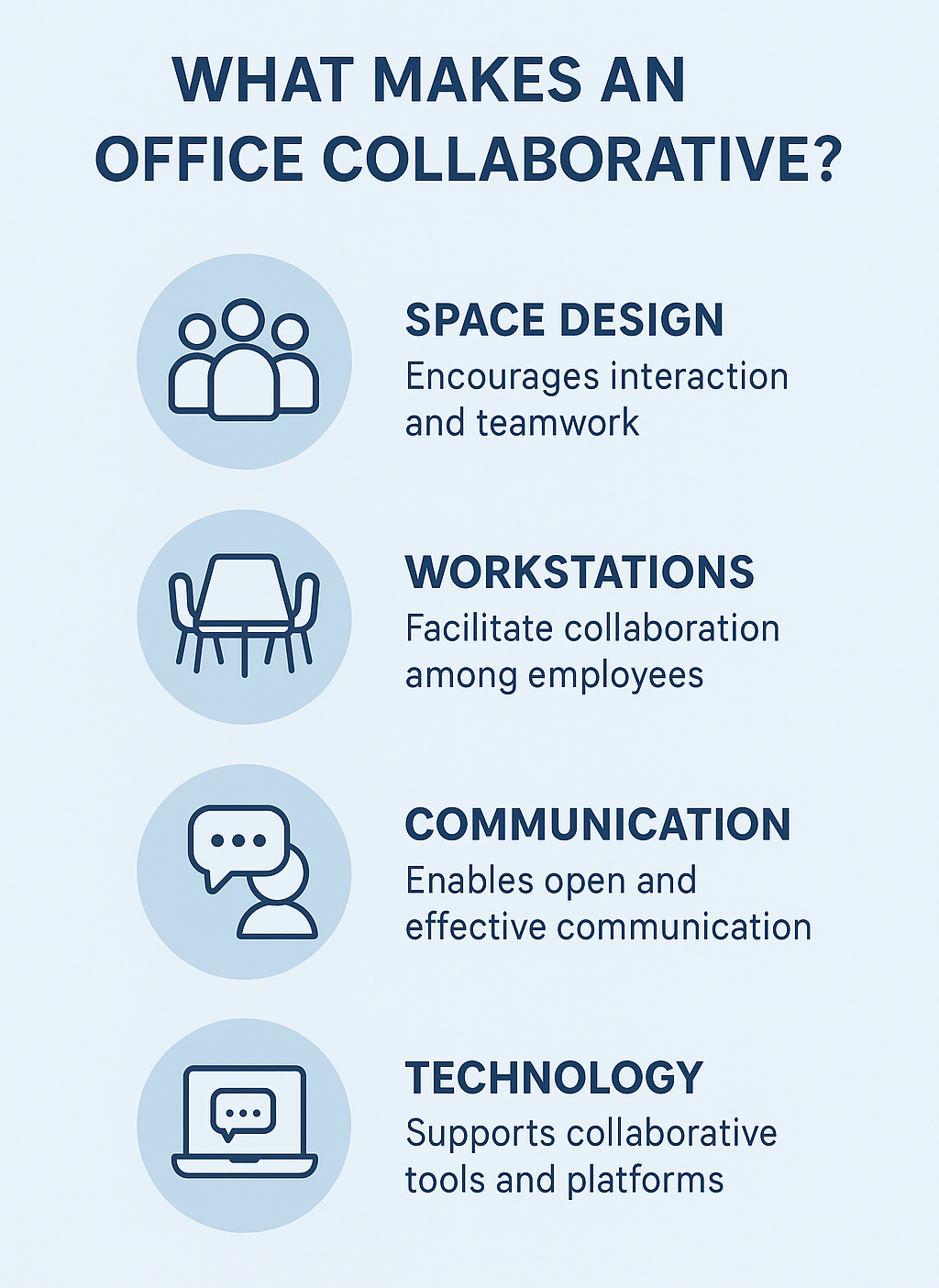
The dreary office designs of the 80s and 90s continue to plague today’s modern offices.
You probably know what I’m talking about – rows and rows of cubical desks.
All of which are partitioned and separated, actively discouraging collaboration and breeding high-stress work environments.
This will ultimately turn off the newer generations of workers, hurting productivity in the process.
This is what Steve Jobs walked into when he decided to redesign the offices at Pixar.
Computer scientists in one building, animators in their own building, editors and executives in a third.
Each area, with its own culture and approach to problem-solving, discouraged the sharing of thoughts and ideas.
Collaborative offices typically feature open design, advanced communication technologies, and flexible facilities for teamwork.
Now, let’s see what solutions make an office collaborative!
 The evolution of collaborative spaces
The evolution of collaborative spaces
In recent years, adding collaborative spaces to offices has been proven to significantly increase employee job satisfaction, productivity, and mental health.
Research shows that people who work in such environments are up to 20% more creative and up to 30% more satisfied with their jobs.
Collaborative spaces are parts of the office that allow employees to easily interact with each other, share ideas, and work on projects as a team.
These spaces typically feature open design, advanced communication technologies, and flexible facilities for teamwork.
The benefits of such spaces go far beyond increasing employee satisfaction; they can improve the speed of decision-making, innovation, and problem-solving within teams, and even minimize the costs associated with office redesign.
That’s not mentioning how small the incurred costs are when implementing shared spaces to outdated corporate office designs.
So, let’s dive deeper into collaborative spaces, what they are, and how a small change can make such a huge difference.
Key Elements of a Collaborative Office
- Physical Space Design: The design of the physical space is one of the most important elements in creating a collaborative office.
Open layouts allow employees to interact with each other and share ideas easily.
On the other hand, designated collaboration zones, such as team cubicles or shared office desks, provide a more relaxed environment for teamwork.
- Technology Integration: Technology plays a very important role in improving collaboration in the office.
Using project management tools allows employees to share files, track project progress, and communicate in real time with colleagues.
In addition to software, stable internet, and audio-visual (AV) equipment such as projectors, large screens, and quality video conferencing systems are essential for effective, disruption-free meetings and to improve the collaboration experience.
- Acoustics and Lighting: Sound and light control are other factors that affect productivity in collaborative environments.
Proper acoustic design using soundproofing panels, appropriate flooring, and acoustic partitions allows employees to maintain focus even in open environments, and team meetings to be conducted effectively.
Also, natural light and its combination with appropriate artificial light increase employee energy and motivation and reduce fatigue.
Cultural and Behavioral Factors
- Encouraging Open Communication: One of the core principles of a collaborative office is open and transparent communication between employees.
When people can present their ideas without fear or restriction, an atmosphere of trust and creativity is created.
To foster this culture, organizations can hold open meetings, use digital tools to share ideas, and even provide employees with informal communication channels.
Encouraging feedback from both managers and employees also makes people feel like their opinions are valued.
- Fostering Inclusivity and Diversity: A truly collaborative environment is one where all voices are heard.
Diversity in teams allows for a broader range of ideas and solutions.
Organizations can create an environment where everyone feels valued by holding training workshops on the importance of diversity, creating anti-discrimination policies, and providing equal opportunities for all employees.
- Leadership’s Role: Leaders and managers play a very important role in shaping a culture of collaboration.
They should themselves be role models for collaboration; that is, they should listen to opinions in meetings, maintain transparency in decision-making, and support teamwork.
When employees see their managers actively participating in the collaboration process, they are more motivated to contribute and brainstorm.
An area for all
Past office designs have usually favored segregated workspaces such as cubicles. This approach benefits neither the employees nor the company. Once companies saw the benefit of designing for collaboration, the “open plan” was created, swinging the pendulum too far to the other side.
Benefits of a Collaborative Office
- Enhanced Creativity and Innovation: One of the most important benefits of collaborative offices is increased creativity and innovation among employees.
When teams work in an open and interactive environment, ideas and information are exchanged quickly, allowing for the creation of innovative solutions to various problems.
As many successful projects of big companies in the world have been shaped by group meetings and collaboration between teams, not traditional offices.
- Improved Employee Satisfaction and Retention: Collaborative spaces also improve employee job satisfaction.
Research shows that employees who work in interactive environments feel more connected and engaged, and are less likely to leave the organization.
This improvement in job satisfaction reduces employee turnover rates and retains talent within the organization, reducing recruitment and retraining costs.
- Increased Efficiency and Problem-Solving: In collaborative environments, decision-making is faster and problem-solving is done more effectively as a group.
When teams can easily share information and ideas, the time required for discussion and review is reduced, and projects move forward faster.
Additionally, complex problems are better solved by multiple people collaborating and exchanging different perspectives, which increases the productivity of the entire organization.
 Challenges and Solutions
Challenges and Solutions
- Overcoming Resistance to Change: One of the most important challenges in implementing collaborative offices is employee resistance to change.
Many people are accustomed to traditional work styles and feel hesitant or worried about new designs.
Some may think that an open environment reduces concentration or increases distraction.
To overcome these concerns, managers need to speak openly with employees, explain the benefits of change, and ask for their opinions during the design process.
- Balancing Collaboration with Privacy: Another challenge is balancing group collaboration with the need for individual focus.
Although open environments are conducive to interaction and collaboration, the lack of private spaces can cause distractions and reduce productivity.
The solution to this problem is a hybrid design; that is, along with open and interactive spaces, private office cubicles or quiet zones for individual work should also be considered.
Using demountable walls, modular and modern office furniture, and acoustic partitions can help employees move between collaboration and focus as needed.
- Maintaining Collaboration in Hybrid Environments: With the spread of remote work and hybrid work models, the question facing organizations is how to maintain communication between in-person and remote teams.
To solve this problem, companies can use online tools to hold hybrid meetings in which in-person and remote employees can participate simultaneously.
In addition to tools, creating clear rules for coordinating teams and holding regular meetings ensures that all members feel a sense of participation and solidarity.
 Open plan office
Open plan office
The open plan was one big collaborative space.
With walls torn down, long tables replaced desks so employees could sit shoulder to shoulder and share ideas with greater ease than before.
Private offices were ditched to eliminate the idea that some people were better than others.
All to force people to collaborate, hoping ideas would be sparked more often, ultimately increasing productivity.
However, it turned out to be only a myth.
The vast majority of workers undisputedly hate open-plan offices.
They’re noisy, lack privacy, and are distracting due to sensory overload, making it almost impossible for many to function.
That’s not even mentioning how easily germs were spread when that one person insists on coming to work ill.
Study after study has since shown open plans to almost completely lack any of the benefits they were meant for.
Many companies realized there could, in fact, be too much of a good thing.
It was shown that too much “us” time from forced collaboration started to leave workers disinterested and less connected.
They began to wonder if they were actually contributing anything of value.
Arriving at anything refreshing or original became increasingly rare. 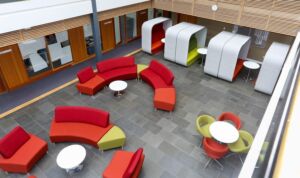
Businesses that relied on collaboration began to seek a balance of “me” time and “us” time.
Being careful not to be too invasive in encouraging collaboration, they found “collaboration spaces” to be the ideal middle ground.
These are thoughtfully designed areas where workers are invited to meet and collaborate.
They are not open offices, but specific spaces for various departments to connect in neutral territory.
A melting pot for ideas where workers from any department and position can solicit proposals and suggestions without any fear of ruffling the corporate feathers.
Three design concepts that balance “us” and “me” space.
There is no “one size fits all” with space design and floor plans, nor should there be, but having one or a combination of the following workspaces for collaboration will support a diverse range of working styles:
 Mixed-use space
Mixed-use space
Also referred to as mixed-scale or mixed-personality rooms, these rooms include furniture clusters of different styles, allowing employees to approach their work creatively. Each cluster has its own personality, such as home-like living rooms or workshop-style spaces. Mixed-use spaces can inspire non-traditional meeting styles while allowing the users to modify the space according to their immediate needs.
 Collision spaces
Collision spaces
These are strategically placed common areas where employees can socialize while grabbing a snack or beverage. Collision spaces are a place for people to relax and recharge while connecting with others when convenient. To inspire creativity, these spaces should have a distinct atmosphere and different furniture from the rest of the workplace.
 Huddle Spaces
Huddle Spaces
Collision spaces are known to be the prime drivers of a collaborative culture, but they rarely provide a distraction-free space for critical thinking, problem-solving, and innovation. Huddle spaces are small, distraction-free spaces with whiteboards, screens, and flexible seating options that support small groups for brainstorming sessions or individual “me” time work.
What’s best for your workers
Ultimately, that is what it is all about: employee wellbeing. Happy employees make a happy company, which then makes happy clients.
For the selfish benefit of your business, it’s best to have spaces that appeal to different personalities.
The social types thrive in an environment that allows and even encourages the freedom to talk and share, while the more heads-down types are more productive and happier in quiet spaces, preferring to collaborate electronically.
Conclusion
In this article, we saw that a collaborative office is a combination of the right workspace, supporting technologies, proper lighting and acoustics, organizational culture, and leadership behaviors.
Together, these elements increase creativity, improve job satisfaction, boost productivity, and solve problems faster.
Now is the time for every organization to assess its workplace.
With small changes, such as redesigning spaces and using digital collaboration tools, managers and business owners can create an environment that both fosters teamwork and respects the individual needs of employees.
A look into the future shows that new collaboration trends, such as smart offices, hybrid work models, and the use of online tools for holding meetings, will play a more prominent role in offices.
Organizations that move toward creating collaborative environments today will be in a better competitive position in the future.
Contact us today and create a collaborative and productive space for your employees through our office space planning services.

John Ofield is the owner of Collaborative Office Interiors. Houston’s trusted source for modern and commercial office furniture, office cubicles, demountable walls, office desks and tables, and complete workspace solutions. With more than 40 years of experience, he combines deep product knowledge with hands-on space-planning expertise to create ergonomic, productivity-focused work environments for businesses across Southeast Texas.


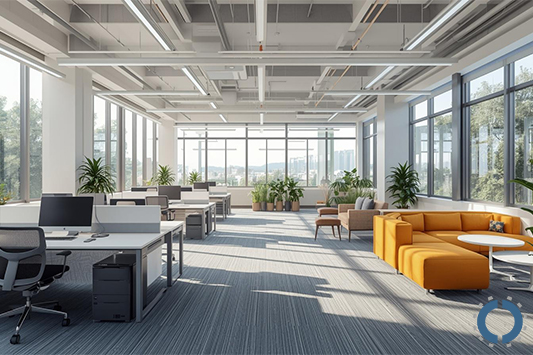
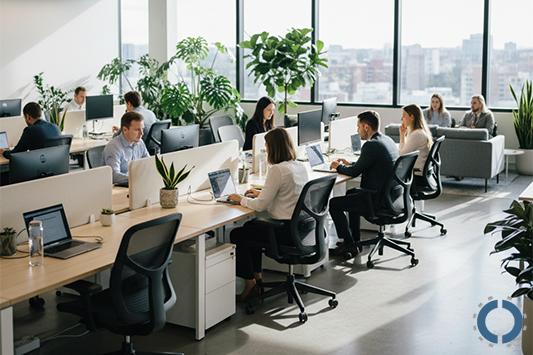 Challenges and Solutions
Challenges and Solutions